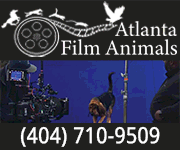
-
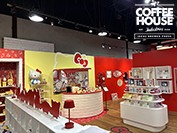 Hello Kitty Pop-Up Torrance
Hello Kitty Pop-Up Torrance
Sanrio Retail Installation by Coffee House Industries -
 MICHAEL WAY'S IMMERSIVE THREE-DIMENSIONAL SOUND EXPERIENCE REVOLUTIONIZES MUSIC VIDEOS, LIVE THEATER, AND THE FUTURE OF CONTENT DEVELOPMENT
MICHAEL WAY'S IMMERSIVE THREE-DIMENSIONAL SOUND EXPERIENCE REVOLUTIONIZES MUSIC VIDEOS, LIVE THEATER, AND THE FUTURE OF CONTENT DEVELOPMENT -
 Winter 2025 Newsletter
Winter 2025 Newsletter -
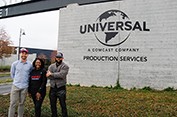 NEW ERA OF INDEPENDENT FILMMAKING IN ATLANTA
NEW ERA OF INDEPENDENT FILMMAKING IN ATLANTA -
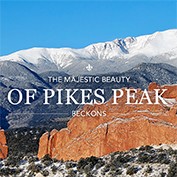 Retreat to the Mountain, Return to Yourself
Retreat to the Mountain, Return to Yourself -
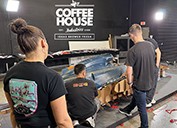 Coffee House Industries Builds the First McLaren x Allwyn "Scratch Car" in Collaboration with Designer Florian Weber
Coffee House Industries Builds the First McLaren x Allwyn "Scratch Car" in Collaboration with Designer Florian Weber -
 Five most common mistakes made by Producers......and how to avoid them!
Five most common mistakes made by Producers......and how to avoid them! -
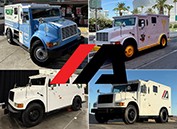 Malibu Autobahn Puts Its Armored Truck to the Test
Malibu Autobahn Puts Its Armored Truck to the Test -
 Announcing the BVA Final 2025 Auction!
Announcing the BVA Final 2025 Auction! -
 New Arrivals
New Arrivals -
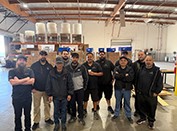 SmartSource Los Angeles Expands to New Facility
SmartSource Los Angeles Expands to New Facility -
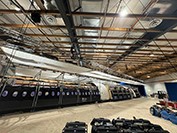 Shoot Aviation Widebody for Apple TV's PLURIBUS
Shoot Aviation Widebody for Apple TV's PLURIBUS -
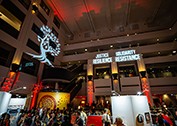 4Wall & Metro Media Productions Illuminate CNA's Global Nurses Solidarity Assembly
4Wall & Metro Media Productions Illuminate CNA's Global Nurses Solidarity Assembly -
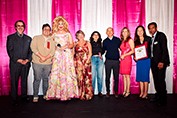 The Lot at Formosa Wins Corporate Innovation Award
The Lot at Formosa Wins Corporate Innovation Award -
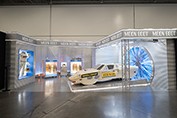 Coffee House Industries Brings MOONBOOT at ComplexCon Las Vegas
Coffee House Industries Brings MOONBOOT at ComplexCon Las Vegas -
 The Board Patrol now carries Sand & Grass Protectors
The Board Patrol now carries Sand & Grass Protectors -
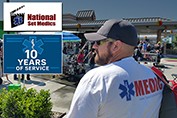 National Set Medics Celebrates 10 Years of Service!
National Set Medics Celebrates 10 Years of Service! -
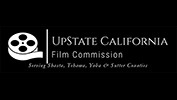 Fall Newsletter
Fall Newsletter
Production News & Events -
 In Memory of Otto Nemenz
In Memory of Otto Nemenz
(1941-2025)
A Legacy That Shaped Cinema -
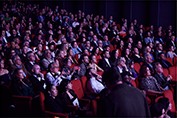 Submissions are Now Open for the Society of Camera Operators (SOC) Camera Operator of the Year Film and Television and will Open November 5th for Technical Achievement Awards
Submissions are Now Open for the Society of Camera Operators (SOC) Camera Operator of the Year Film and Television and will Open November 5th for Technical Achievement Awards -
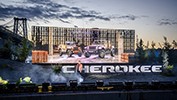 4Wall & GPJ Transform Domino Park for Historic Jeep Cherokee 2026 Reveal By 4Wall Entertainment
4Wall & GPJ Transform Domino Park for Historic Jeep Cherokee 2026 Reveal By 4Wall Entertainment -
 GALPIN IS PROUD TO INTRODUCE OUR
GALPIN IS PROUD TO INTRODUCE OUR
NEW Production Supply Manager
John Vargas -
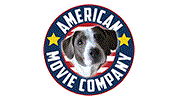
-
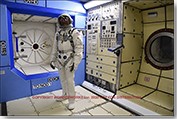 WonderWorks - Gateway To The Stars
WonderWorks - Gateway To The Stars -
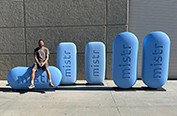 WLA3D Produces Large Scale Models for Company Launch
WLA3D Produces Large Scale Models for Company Launch -
 United Rentals Tool Solutions Powers Film & Production Communications
United Rentals Tool Solutions Powers Film & Production Communications -

-
 Coffee House Industries Helps Bring Six Flags Fright Fest to Life
Coffee House Industries Helps Bring Six Flags Fright Fest to Life -
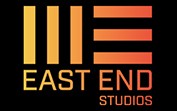
-
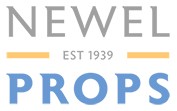 Newel Props, Film and TV Set Rentals in New York
Newel Props, Film and TV Set Rentals in New York -
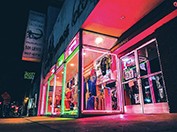 From store racks to your home screen...
From store racks to your home screen...
Iguana Vintage Clothing is LIVE on WhatNot! -
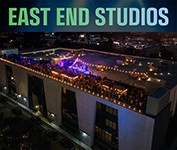
-
 Welcome to TCP Insurance: Trusted Coverage for the Creative Community
Welcome to TCP Insurance: Trusted Coverage for the Creative Community -
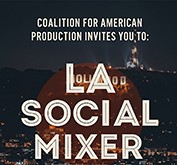
-
 From Sketch to Spotlight: Coffee House Industries Brings the Canelo vs. Crawford Belt Display to Life in Record Time
From Sketch to Spotlight: Coffee House Industries Brings the Canelo vs. Crawford Belt Display to Life in Record Time -
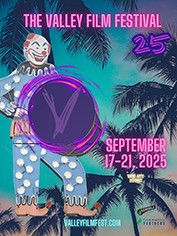 The 25th Annual Valley Festival is Here Again
The 25th Annual Valley Festival is Here Again -
 The Lot at Formosa: A Storied Studio's Next Chapter Unfolds
The Lot at Formosa: A Storied Studio's Next Chapter Unfolds -
 2025 EMERGING CINEMATOGRAPHER AWARDS - LOS ANGELES!
2025 EMERGING CINEMATOGRAPHER AWARDS - LOS ANGELES! -
 Producers are going BIG with Reel Monster Trucks
Producers are going BIG with Reel Monster Trucks -

-

-
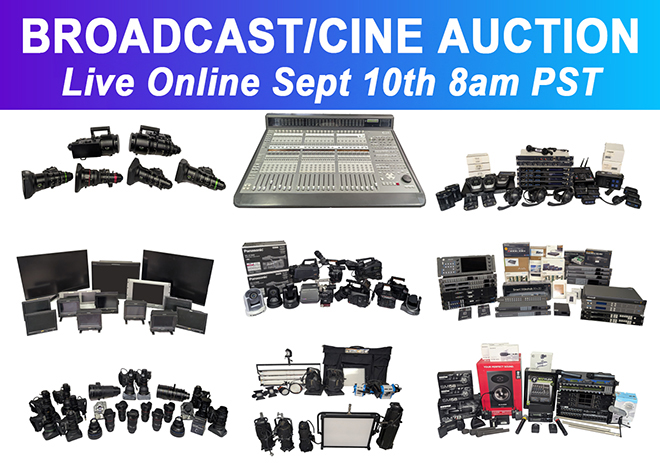
-
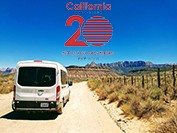 California Rent A Car's Studio Division celebrates its 20th anniversary!
California Rent A Car's Studio Division celebrates its 20th anniversary! -
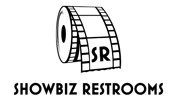 Showbiz Restrooms Brings Luxury to the Film Industry
Showbiz Restrooms Brings Luxury to the Film Industry -
 FILM READY AVIATION MOCKUPS
FILM READY AVIATION MOCKUPS -
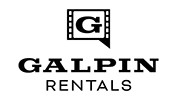 Here we Grow Again
Here we Grow Again -
 From Blueprint to Reality: Heck Yeah Productions Unveils 5,000 Sq. Ft. Event and Recording Space
From Blueprint to Reality: Heck Yeah Productions Unveils 5,000 Sq. Ft. Event and Recording Space -
 Quixote Provides Solar Power, Shared Smarter
Quixote Provides Solar Power, Shared Smarter -
 Lights! Camera! aaaand GOLDENS at All Animal Actors International
Lights! Camera! aaaand GOLDENS at All Animal Actors International -
 Baldwin Production Services San Francisco nominated for 2025 Cola Award
Baldwin Production Services San Francisco nominated for 2025 Cola Award -
 Summer 2025 Newsletter
Summer 2025 Newsletter -
 Keep Production in LA Industry Mixer Thursday Aug 21, 2024
Keep Production in LA Industry Mixer Thursday Aug 21, 2024 -
 Creative Handbooks to be Given Out at the Upcoming Location Managers Guild International Awards
Creative Handbooks to be Given Out at the Upcoming Location Managers Guild International Awards -

-
 Cape Town, Music Curation, Shout out & Podcast Interview VAMO
Cape Town, Music Curation, Shout out & Podcast Interview VAMO -
 Get One-Stop Shopping on Fabric Printing & Borderless Framing
Get One-Stop Shopping on Fabric Printing & Borderless Framing -
 OpenAI's New Browser Could Change the Internet Forever
OpenAI's New Browser Could Change the Internet Forever -
 Malibu Autobahn Rolls Through LA with Joseline Hernandez for Zeus Network
Malibu Autobahn Rolls Through LA with Joseline Hernandez for Zeus Network -
 Studio Animal Services, LLC - Kittens Available for Production
Studio Animal Services, LLC - Kittens Available for Production -
 Wireless Teleprompter Rig Takes to the Streets of Midtown Manhattan
Wireless Teleprompter Rig Takes to the Streets of Midtown Manhattan -

-
 New Everyday Low Prices on Rigging Hardware Take a Look at 20% Lower Prices on Average
New Everyday Low Prices on Rigging Hardware Take a Look at 20% Lower Prices on Average -
 Westside Digital Mix: Venice Edition
Westside Digital Mix: Venice Edition -
 Film in Palmdale
Film in Palmdale
Scenic Locations, Valuable Incentives -
 Los Angeles Properties for
Los Angeles Properties for
Filming, Events, Activations
Pop Ups and Photo -
 Burbank Stages can now be painted any color to match
Burbank Stages can now be painted any color to match -
 Custom Prop Rentals: Bringing Your Dream Event to Life with Life-Size Magic
Custom Prop Rentals: Bringing Your Dream Event to Life with Life-Size Magic -
 New Arrivals
New Arrivals -
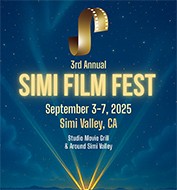
-
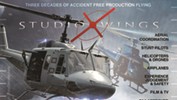 Studio Wings moves offices, flight operations and aircraft to the Santa Fe Airport
Studio Wings moves offices, flight operations and aircraft to the Santa Fe Airport -
 WeCutFoam Specializes in Fabrication of Signs, Logos and Letters for Company Summits
WeCutFoam Specializes in Fabrication of Signs, Logos and Letters for Company Summits -
 Studio Tech Provides Wi-Fi And Internet for The Superman Movie Press Junket
Studio Tech Provides Wi-Fi And Internet for The Superman Movie Press Junket -
 Superman movie Press Junket @ Buttercup Venues
Superman movie Press Junket @ Buttercup Venues -
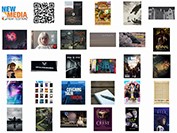 Honoring Stories Worth Telling Since 2009
Honoring Stories Worth Telling Since 2009
All Ages - All Cultures - All Media -
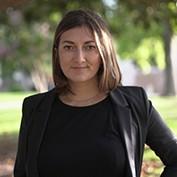 Xenia Lappo Joins ESTA as New Program Manager for Membership & Events
Xenia Lappo Joins ESTA as New Program Manager for Membership & Events -
 Nathan Wilson and Chris Connors discuss creating for children's television with ZEISS Supreme Prime lenses
Nathan Wilson and Chris Connors discuss creating for children's television with ZEISS Supreme Prime lenses -
 Luxury Solar Restroom Trailer Sustainability
Luxury Solar Restroom Trailer Sustainability -
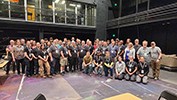 Midwest Rigging Intensive Returns with Touring Rigging Theme
Midwest Rigging Intensive Returns with Touring Rigging Theme -
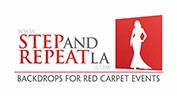 Custom Pool Floats That Steal the Show
Custom Pool Floats That Steal the Show -
 Malibu Autobahn Dresses Coachella 2025 for Shoreline Mafia
Malibu Autobahn Dresses Coachella 2025 for Shoreline Mafia -
 Thunder Studios Wins Nine 2025 Telly Awards
Thunder Studios Wins Nine 2025 Telly Awards -
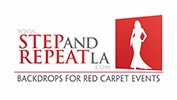
-
 LCW Props Is Your One Stop Prop Shop
LCW Props Is Your One Stop Prop Shop -
 Venues in Los Angeles for Activations and Filming
Venues in Los Angeles for Activations and Filming -

-

-
 Honoring Stories Worth Telling Since 2009 - All Ages - All Cultures - All Media
Honoring Stories Worth Telling Since 2009 - All Ages - All Cultures - All Media -
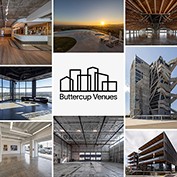 Buttercup Venues Accepting Submissions to Help Property Owners Monetize Their Spaces
Buttercup Venues Accepting Submissions to Help Property Owners Monetize Their Spaces -
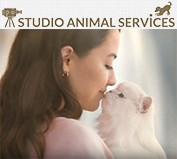 Studio Animal Services Stars in Latest Fancy Feast Commercial
Studio Animal Services Stars in Latest Fancy Feast Commercial -
 WDM celebrates Summer at the famed Michael's Santa Monica
WDM celebrates Summer at the famed Michael's Santa Monica -
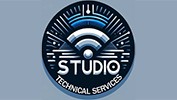 Studio Technical Services Inc.
Studio Technical Services Inc.
Spring 2025 Newsletter -
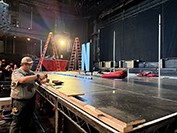 From Call to Setup: Coffee House Industries Lights Up Netflix Is a Joke at the Avalon
From Call to Setup: Coffee House Industries Lights Up Netflix Is a Joke at the Avalon -
 WLA3D produces scale model for Fox Grip
WLA3D produces scale model for Fox Grip -
 Filming Locations and Event Venues Los Angeles
Filming Locations and Event Venues Los Angeles -
 Scenic Expressions Launches a Full-Service Liquidation Solution for the Film & TV Industry
Scenic Expressions Launches a Full-Service Liquidation Solution for the Film & TV Industry -
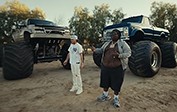 Producers Need Reel Monster Trucks for Reel Productions
Producers Need Reel Monster Trucks for Reel Productions -
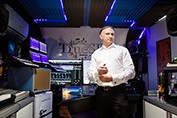 Meet Michael Way | Engineer
Meet Michael Way | Engineer -
 In Development: ZEISS Virtual Lens Technology Elevating VFX with physically based lens effects
In Development: ZEISS Virtual Lens Technology Elevating VFX with physically based lens effects -
 (2) PREMIER AV ACTIONS
(2) PREMIER AV ACTIONS -
 RSVP - 80 Films & Tech - Meet the Visionaries - EMMY, Telly, Peabody winners and more
RSVP - 80 Films & Tech - Meet the Visionaries - EMMY, Telly, Peabody winners and more -
 New Arrivals Are Here - Check Out LMTreasures.com
New Arrivals Are Here - Check Out LMTreasures.com -
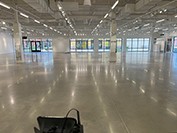 Film-Friendly Retail Space at Tejon Outlets
Film-Friendly Retail Space at Tejon Outlets -
 Behind Every Great Production, There's a Great Move
Behind Every Great Production, There's a Great Move -
 Buttercup Venues' recent work with Invisible Dynamics & Blue Revolver
Buttercup Venues' recent work with Invisible Dynamics & Blue Revolver -
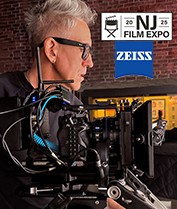 Join ZEISS Cinema at this year's NJ Film Expo on Thursday, May 1
Join ZEISS Cinema at this year's NJ Film Expo on Thursday, May 1 -
 The Location Managers Guild International (LMGI) announces that its 12th Annual LMGI Awards Show will be held on Saturday, August 23, 2025
The Location Managers Guild International (LMGI) announces that its 12th Annual LMGI Awards Show will be held on Saturday, August 23, 2025 -
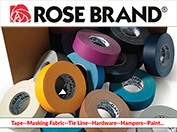 Get Your Production Supplies Now While Prices Are Stable*
Get Your Production Supplies Now While Prices Are Stable*
Rose Brand Is Your One Stop Shop -
 Immersive Sound for your next production from TrueSPL
Immersive Sound for your next production from TrueSPL -
 WeCutFoam Fabricating Large Scale Props and Decor for Companies & Products Launching Events
WeCutFoam Fabricating Large Scale Props and Decor for Companies & Products Launching Events -
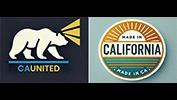 The "CA-Creates" eGroup Network
The "CA-Creates" eGroup Network -
 The Location Managers Guild International Announces the Newly Elected 2025 LMGI Board of Directors
The Location Managers Guild International Announces the Newly Elected 2025 LMGI Board of Directors -
 Production Moves: How to Find the Most Qualified Mover
Production Moves: How to Find the Most Qualified Mover -
 SAG-AFTRA Talent Payments @ Production Payroll Services
SAG-AFTRA Talent Payments @ Production Payroll Services -
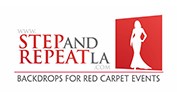
-

-
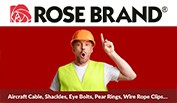 New Everyday Low Prices on Rigging Hardware
New Everyday Low Prices on Rigging Hardware
Take a Look at 20% Lower Prices on Average -
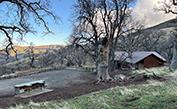 Tejon Ranch introduces its Premium Ranch Cabins
Tejon Ranch introduces its Premium Ranch Cabins -
 Our Enchanting Garden Collection is Growing!
Our Enchanting Garden Collection is Growing! -
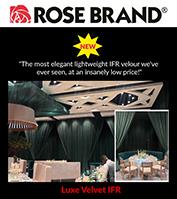
-
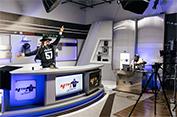
-
 Top Entertainment CEOs & Industry Titans Join Forces for Groundbreaking New Media Film Festival®
Top Entertainment CEOs & Industry Titans Join Forces for Groundbreaking New Media Film Festival® -
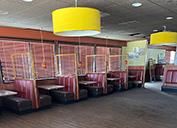 Tejon Ranch opens Diner location for your next Production
Tejon Ranch opens Diner location for your next Production -
 Discover the Performance of ZEISS Otus ML
Discover the Performance of ZEISS Otus ML
Deep Dive into the Features and Technology -
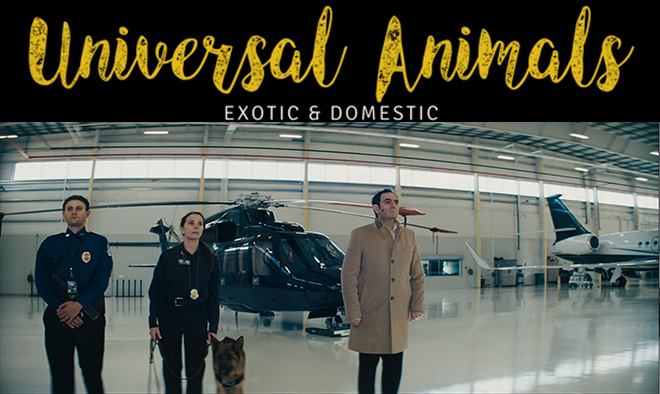 Universal Animals cast the dog in Anora!
Universal Animals cast the dog in Anora! -
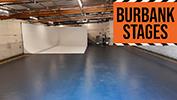 Burbank Stages is Now Open with upgraded support space
Burbank Stages is Now Open with upgraded support space -

-
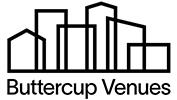 Buttercup Venues Grows Portfolio with Exciting New Locations for Filming and Events
Buttercup Venues Grows Portfolio with Exciting New Locations for Filming and Events -
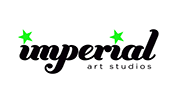 Fashion District Suite 301
Fashion District Suite 301 -
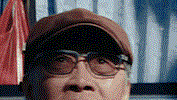 Something new is coming for Photographers
Something new is coming for Photographers
Mark Your Calendar - February 25th -
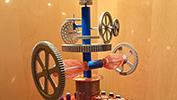 WLA3D completes scale model of vintage Knott's Berry Farm attraction
WLA3D completes scale model of vintage Knott's Berry Farm attraction -
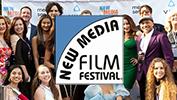 New Media Film Festival has invited you to submit your work via FilmFreeway!
New Media Film Festival has invited you to submit your work via FilmFreeway! -
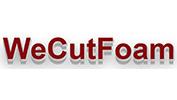 WeCutFoam Collaborated Once More with Children's Miracle Network Hospitals
WeCutFoam Collaborated Once More with Children's Miracle Network Hospitals -
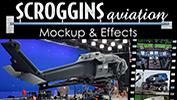
-
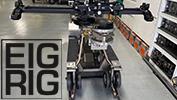 EigRig SLIDE-R1 Revolutionizes Filmmaking Production with Innovation
EigRig SLIDE-R1 Revolutionizes Filmmaking Production with Innovation -
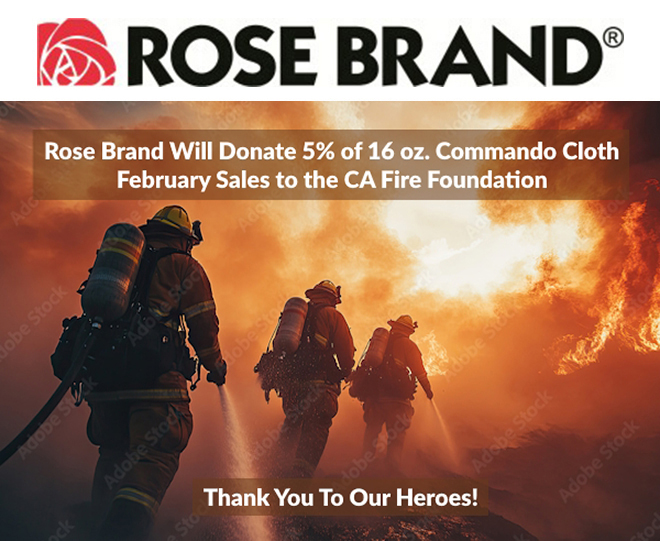
-

-

-
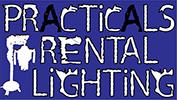 Practicals Rental Lighting Welcomes the Jucolor UV Flatbed Printer
Practicals Rental Lighting Welcomes the Jucolor UV Flatbed Printer -
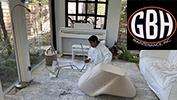 GBH Maintenance Inc. Has Grown
GBH Maintenance Inc. Has Grown -
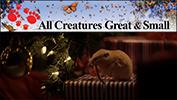 The Rarest Stars Shine Brightest
The Rarest Stars Shine Brightest -
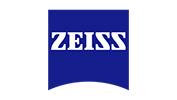 Affected by the ongoing California wildfires
Affected by the ongoing California wildfires -
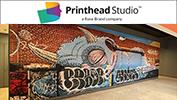 Get One-Stop Shopping...
Get One-Stop Shopping... -
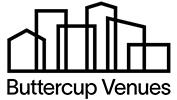 Buttercup Venues Expands
Buttercup Venues Expands -
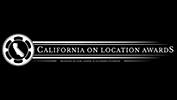
-
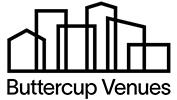 Los Angeles Office Spaces: Versatile Backdrops for Filming
Los Angeles Office Spaces: Versatile Backdrops for Filming -
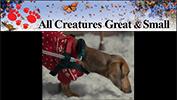 All Creatures Great and small holiday commercial for Montefiore hospital
All Creatures Great and small holiday commercial for Montefiore hospital -
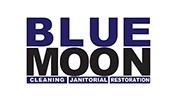 DEEP CLEANS WAREHOUSE FOR SUPER BOWL COMMERCIAL
DEEP CLEANS WAREHOUSE FOR SUPER BOWL COMMERCIAL -
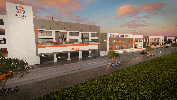 New Production Hub in Los Angeles
New Production Hub in Los Angeles -
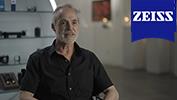 Carlos R. Diazmuñoz
Carlos R. Diazmuñoz -
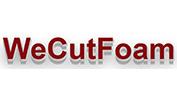 WeCutFoam Specializes in Decor
WeCutFoam Specializes in Decor -
 Studio Technical Services Inc.
Studio Technical Services Inc.
Fall 2024 Update -
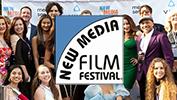 New Media Film Festival has invited you to submit your work
New Media Film Festival has invited you to submit your work -
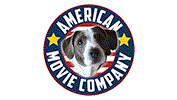
-
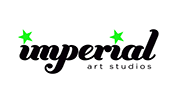 Available again!
Available again!
Studio 301 - 16,000 Sq. Ft. -
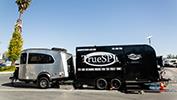 Elevate Your Production with SoundPressure Labs'
Elevate Your Production with SoundPressure Labs' -
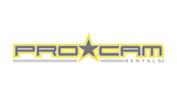 Pro-Cam expands rental operation...
Pro-Cam expands rental operation... -
 NATIONAL ASSOCIATION OF LATINO INDEPENDENT PRODUCERS
NATIONAL ASSOCIATION OF LATINO INDEPENDENT PRODUCERS -
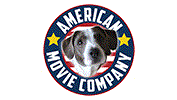 New Sony A9 III Reviews
New Sony A9 III Reviews -
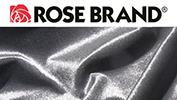 New, Heavyweight, Lustrous, Shimmering 56" Elana IFR Fabric
New, Heavyweight, Lustrous, Shimmering 56" Elana IFR Fabric -
 JOIN US IN ORLANDO THIS NOVEMBER!
JOIN US IN ORLANDO THIS NOVEMBER! -
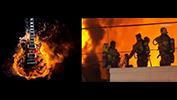 BLUE MOON CLEANING
BLUE MOON CLEANING
RESTORES MUSIC-MAKING -
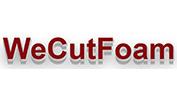 Another Collaboration Between WeCutFoam and Event Planner
Another Collaboration Between WeCutFoam and Event Planner -
 BLUE MOON CONGRATULATES 2024 COLA FINALISTS
BLUE MOON CONGRATULATES 2024 COLA FINALISTS -
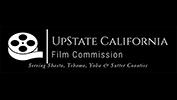 Fall Production News & Events
Fall Production News & Events -
 Not just green, but mighty Verde
Not just green, but mighty Verde -
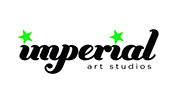 Introducing...
Introducing...
Restaurant/Bar/Venue in Encino -
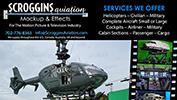
-
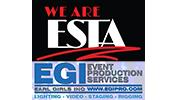 ESTA and Earl Girls, Inc. Launch $100,000 TSP Fundraising Challenge
ESTA and Earl Girls, Inc. Launch $100,000 TSP Fundraising Challenge -
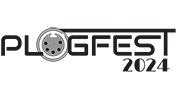 There's still time to register for ESTA's Plugfest
There's still time to register for ESTA's Plugfest -
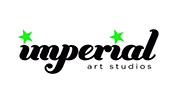
-
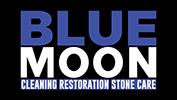 BLUE MOON CLEANING SEES SPIKE IN MAJOR LA FEATURE FILMING
BLUE MOON CLEANING SEES SPIKE IN MAJOR LA FEATURE FILMING -
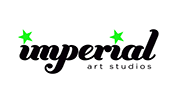
Amoeba Records on Sunset
&
SuperMarket in K-Town -
 "Alice in Wonderland" tea party brought to life...
"Alice in Wonderland" tea party brought to life... -
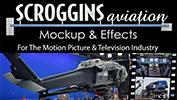 Filming With Production Ready Aviation Equipment
Filming With Production Ready Aviation Equipment -

-
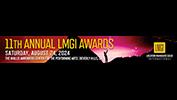
-
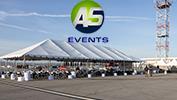 A5 Events - Take Your Event to The Next Level
A5 Events - Take Your Event to The Next Level -
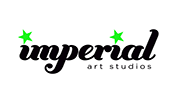 The Original Amoeba Records Venue
The Original Amoeba Records Venue
& The SuperMarket -
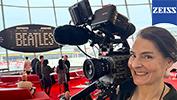 Doc Filmmaker Jennifer Cox
Doc Filmmaker Jennifer Cox -
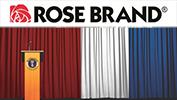 Red, White or Blue Rental Drapes
Red, White or Blue Rental Drapes -
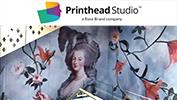 Introducing Tuck Track Invisible Framing for Fabric Prints
Introducing Tuck Track Invisible Framing for Fabric Prints -

-
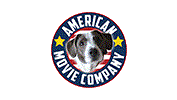 American Movie Company's LED Wall Studio Sale
American Movie Company's LED Wall Studio Sale -
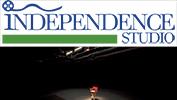 Black 360 Independence Studio
Black 360 Independence Studio -
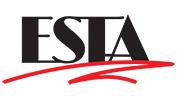 Nominations are open for the 2025 ESTA Board of Directors!
Nominations are open for the 2025 ESTA Board of Directors! -
 Custom Prop Rentals is moving to a new, larger location!
Custom Prop Rentals is moving to a new, larger location! -
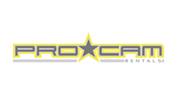 Pro-Cam opens Las Vegas branch, expanding rental operation
Pro-Cam opens Las Vegas branch, expanding rental operation -
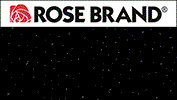 New ShowLED Starlight Drops
New ShowLED Starlight Drops -
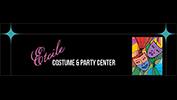 Costume House Sidewalk Sale
Costume House Sidewalk Sale -
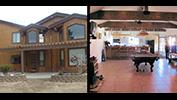 Working Wildlife's newly renovated 60 acre ranch available for Filming
Working Wildlife's newly renovated 60 acre ranch available for Filming -
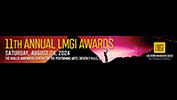 Location Manager Bill Bowling
Location Manager Bill Bowling
to Receive the Trailblazer Award -

-
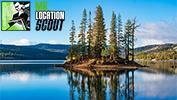 Mr. Location Scout is in Lake Tahoe
Mr. Location Scout is in Lake Tahoe -
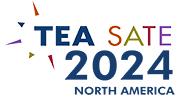 DreamMore Resort Fountain
DreamMore Resort Fountain -
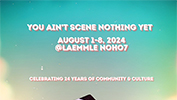 Valley Film Festival
Valley Film Festival
Greetings from the (818): -
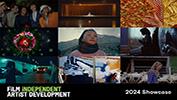 2024 Changemaker Awards and Artist Development Showcase
2024 Changemaker Awards and Artist Development Showcase -
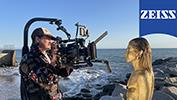 ZEISS Conversations with Jack Schurman
ZEISS Conversations with Jack Schurman -
 Collaboration Between WeCutFoam and Yaamava Resort & Casino
Collaboration Between WeCutFoam and Yaamava Resort & Casino -
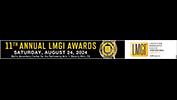 Location Managers Guild International Awards
Location Managers Guild International Awards -
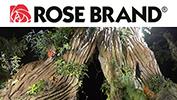 Molding Cloth
Molding Cloth
Make Fabulous Textured Designs -
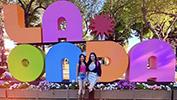 WeCutFoam Specializes in Large Events
WeCutFoam Specializes in Large Events -
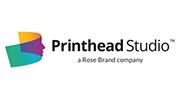 Introducing Truck Track Invisible Framing for Fabric Prints
Introducing Truck Track Invisible Framing for Fabric Prints -
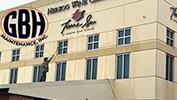 GBH Maintenance is back at Herzog Wine Cellars
GBH Maintenance is back at Herzog Wine Cellars -
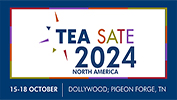 SATE NORTH AMERICA 2024
SATE NORTH AMERICA 2024 -
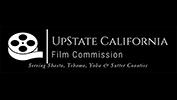 Production News & Events Summer Edition
Production News & Events Summer Edition -
 Four Amazing Architectural Locations!
Four Amazing Architectural Locations! -
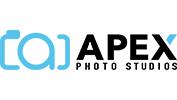 * BIG SAVINGS * ON BIG STUDIOS
* BIG SAVINGS * ON BIG STUDIOS -
 Let Your Brand Stand Tall!
Let Your Brand Stand Tall! -
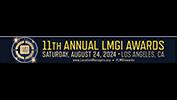 Sue Quinn to Receive Lifetime Achievement Award
Sue Quinn to Receive Lifetime Achievement Award -
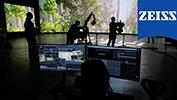 ZEISS Cinema at Filmscape Chicago
ZEISS Cinema at Filmscape Chicago -
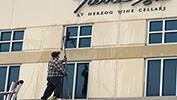 GBH Maintenance Is the Standard for Commercial Maintenance
GBH Maintenance Is the Standard for Commercial Maintenance -
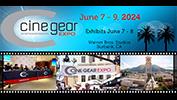 Come Join Us at Cine Gear Expo 2024
Come Join Us at Cine Gear Expo 2024 -
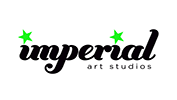 Available now:
Available now:
6th Street Gallery & Venue -
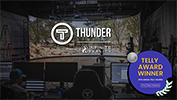 Thunder Studios Triumphs with Five Telly Awards
Thunder Studios Triumphs with Five Telly Awards -
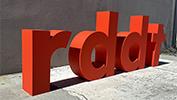 Reddit Went Public IPO - WeCutFoam Was There With Decor
Reddit Went Public IPO - WeCutFoam Was There With Decor -
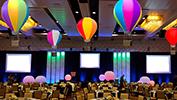 AirDD's Hottest New Product
AirDD's Hottest New Product
for 2024 Events -
 GBH Maintenance Sets the Standard for Window Cleaning
GBH Maintenance Sets the Standard for Window Cleaning -
 Haigwood Studios collaboration with the UGA Dodd School of Art
Haigwood Studios collaboration with the UGA Dodd School of Art -

-
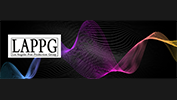 RX GOES TO 11!
RX GOES TO 11!
with Mike Rozett -
 Don't Be A Square - Think Outside The Box!!
Don't Be A Square - Think Outside The Box!! -
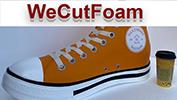 WeCutFoam Fabricates Realistic Lifesize Props
WeCutFoam Fabricates Realistic Lifesize Props -
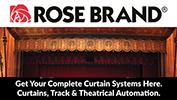
-
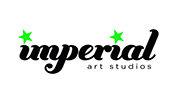 Exposition Park Stage/Venue
Exposition Park Stage/Venue -
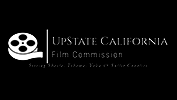 Production Update From UpState California Film Commission
Production Update From UpState California Film Commission -
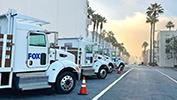 Base Camp With All The Extras
Base Camp With All The Extras -
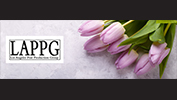 LAPPG AT THE ZEISS CINEMA SHOWROOM
LAPPG AT THE ZEISS CINEMA SHOWROOM -
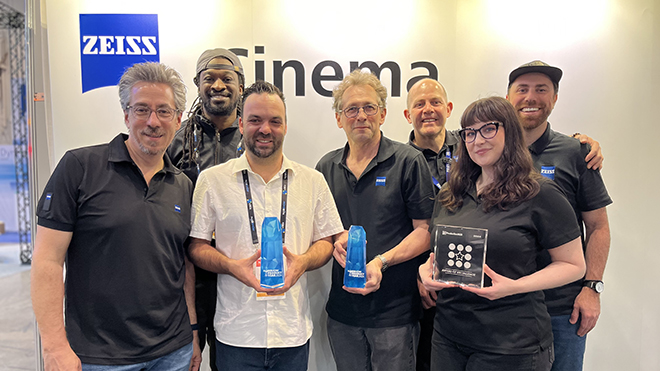 ZEISS Nano Primes and ZEISS CinCraft Scenario Received NAB Show 2024
ZEISS Nano Primes and ZEISS CinCraft Scenario Received NAB Show 2024 -
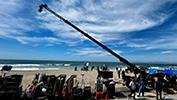 Cranium Camera Cranes Introduces the all new Tankno Crane!
Cranium Camera Cranes Introduces the all new Tankno Crane! -
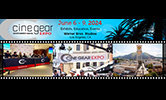 Come Join Us at Cine Gear Expo 2024
Come Join Us at Cine Gear Expo 2024 -
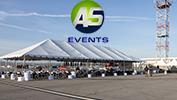 FAA Drill Burbank Airport
FAA Drill Burbank Airport
(federal aviation administration) -
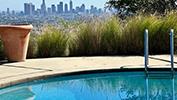 Exclusive Stahl Substitute Listing from Toni Maier-On Location, Inc.
Exclusive Stahl Substitute Listing from Toni Maier-On Location, Inc. -
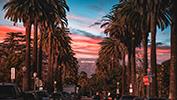 GBH Maintenance: Elevating Janitorial Standards Across Los Angeles
GBH Maintenance: Elevating Janitorial Standards Across Los Angeles -
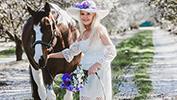 LOCATION CONNECTION has the best RANCHES FOR FILMING!
LOCATION CONNECTION has the best RANCHES FOR FILMING! -
 Hollywood Studio Gallery has Moved
Hollywood Studio Gallery has Moved -
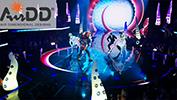 AirDD's inflatable "Kraken" designs transformed Masked Singers
AirDD's inflatable "Kraken" designs transformed Masked Singers -
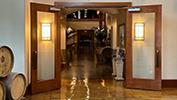 GBH maintenance Provided a Hollywood Shine for Herzog Wine Cellars
GBH maintenance Provided a Hollywood Shine for Herzog Wine Cellars -
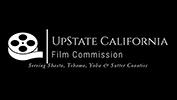 Production News & Events
Production News & Events
Spring Newsletter -
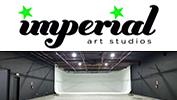 Immersive Venue/ Black Box/ Stage
Immersive Venue/ Black Box/ Stage
2024 DTLA Arts District -
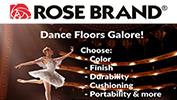
-
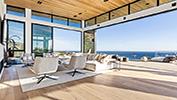 Exclusive Malibu Listing from Toni Maier - On Location, Inc.
Exclusive Malibu Listing from Toni Maier - On Location, Inc. -
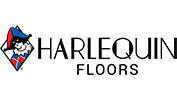 Empowered Collaborates with Harlequin Floors
Empowered Collaborates with Harlequin Floors -
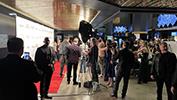 Movie Premiere, TCL Chinese Theater
Movie Premiere, TCL Chinese Theater -
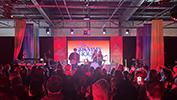 Studio Tech provides services for the Grammy House
Studio Tech provides services for the Grammy House -
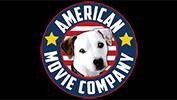 Sora AI Text To Video
Sora AI Text To Video -
 New Apex Photo Studios
New Apex Photo Studios
Website: Rent Smarter, Create More & earn rewards! -

-
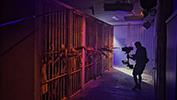 How Ideal Sets Founder Harry Hou Cracked the Code on Affordable Standing Sets
How Ideal Sets Founder Harry Hou Cracked the Code on Affordable Standing Sets -
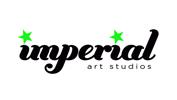 New Storage & Co-Working Spaces In Boyle Heights near Studios
New Storage & Co-Working Spaces In Boyle Heights near Studios
For Short or long term rental -
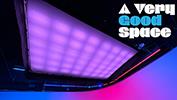 Auroris X Lands at A Very Good Space
Auroris X Lands at A Very Good Space -
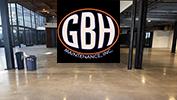 GBH Maintenance Completes Work on 33000ft Production Space
GBH Maintenance Completes Work on 33000ft Production Space -
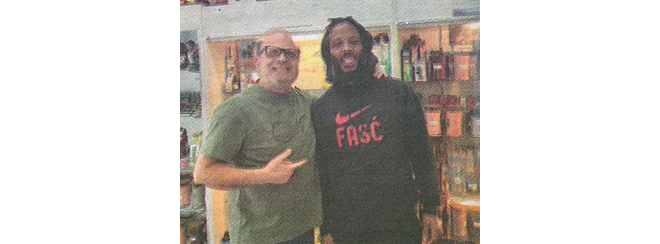 MUSICIAN ZIGGY MARLEY IS ANOTHER HAPPY.CUSTOMER OF MAILBOX TOLUCA LAKE'S 'DR. VOICE'
MUSICIAN ZIGGY MARLEY IS ANOTHER HAPPY.CUSTOMER OF MAILBOX TOLUCA LAKE'S 'DR. VOICE' -
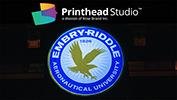 Custom Digitally Printed Commencement Banners & Backdrops
Custom Digitally Printed Commencement Banners & Backdrops -
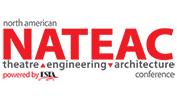 Rose Brand, SGM, Bill Sapsis, Sapsis Rigging, and Harlequin Floors Sponsor NATEAC Events
Rose Brand, SGM, Bill Sapsis, Sapsis Rigging, and Harlequin Floors Sponsor NATEAC Events -
 Kitty Halftime Show air for Animal Planet's Puppy Bowl
Kitty Halftime Show air for Animal Planet's Puppy Bowl -
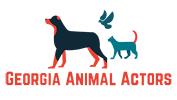 Georgia Animal Actors Persents Merlin
Georgia Animal Actors Persents Merlin -
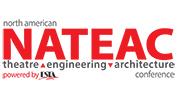 ESTA Launches Revamped NATEAC Website
ESTA Launches Revamped NATEAC Website -
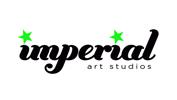 Mollie's Locations
Mollie's Locations -
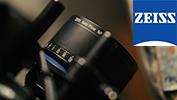 ZEISS Cinema News for February
ZEISS Cinema News for February -

-
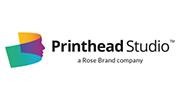 Seamless Fabric Backdrops up to 140ft x 16ft, Printed Floors...
Seamless Fabric Backdrops up to 140ft x 16ft, Printed Floors... -
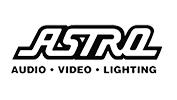 Check out all the Pioneer Gear at Astro!
Check out all the Pioneer Gear at Astro! -
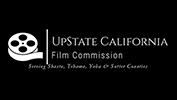 Production News & Events
Production News & Events -
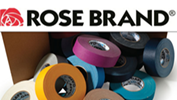 All of Your Production Supplies Gathered in Just One Place
All of Your Production Supplies Gathered in Just One Place -
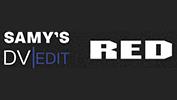 Meet the RED V-Raptor [X]
Meet the RED V-Raptor [X] -
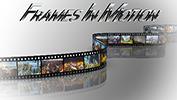 Sit Back and Enjoy Some Laughs
Sit Back and Enjoy Some Laughs -
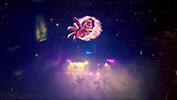 Mr. Location Scout Scouted and Managed Locations
Mr. Location Scout Scouted and Managed Locations -
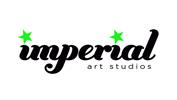 Introducing...
Introducing...
Landmark Restaurant in Encino -
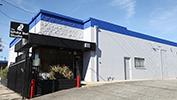 The White Owl Studio is celebrating all that is new!
The White Owl Studio is celebrating all that is new! -

-
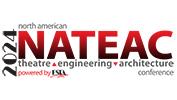 Last Call for NATEAC 2024 Proposals
Last Call for NATEAC 2024 Proposals -
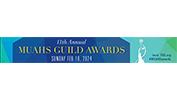 NOMINATIONS ANNOUNCED FOR THE
NOMINATIONS ANNOUNCED FOR THE
2024 MUAHS -
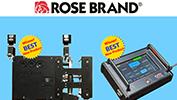 Voted Best New Stage Rigging Products at LDI 2023
Voted Best New Stage Rigging Products at LDI 2023 -
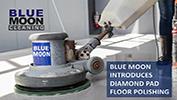 NEED MORE SPARKLE IN THE FLOOR?
NEED MORE SPARKLE IN THE FLOOR? -
 David Panfili to Appoint Michael Paul as President of Location Sound Corp.
David Panfili to Appoint Michael Paul as President of Location Sound Corp.
industry news
The Latest Industry News for the Exciting World of Production.
Creative Handbook puts together a bi-monthly newsletter featuring
up-to-date information on events, news and industry changes.
Add My Email
Star Trek Beyond with I.A.T.S.E. Local 706 Make-Up Artists & Hair Stylists Guild
By: Steve Buscaino | Make-up Artist | I.A.T.S.E. Local 706 | December 28, 2016
Email This Article |  |
| 

It is rare these days, for a film studio to develop a project that showcases make-up prosthetics to the level of quality and quantity that is seen in Paramount's new film, Star Trek Beyond. Of course, there are film and television shows that feature numerous make-ups but typically, they are not as extensive as this. The make-up designs in Star Trek Beyond were developed into 56 different alien races with multiple make-ups within those races, almost all of which were full head coverage involving intricate painting and detail. The challenge on this film would be to keep the complexity and quantities of the make-ups under control and get everything built in a short time frame while still pushing the aesthetic of the alien characters.
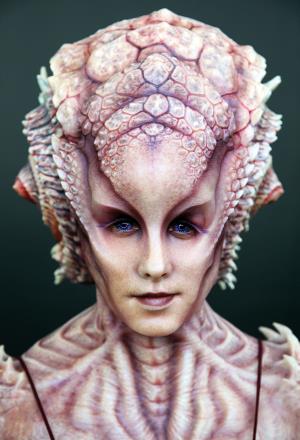
Star Trek alien Natalia
Not too many years ago, make-up budgets and time schedules were much larger and longer. Those were the good old days and are now long gone! So when producer Jeffrey Chernov asked Joel Harlow to head up the Make-up Department for the film, everyone viewed it as a huge challenge.
Designs were the first order of business. Joel hired designers Carlos Huante, Allen Williams and Don Lanning. Around a hundred different designs were made and set out before director Justin Lin. He would then pick out the ones that would get developed further. Designer Neville Page made some contributions as well, and both teams of designers strove to keep the designs in a Star Trek style.
The design team not only had to create new alien races, but it also had to "update" some of the already established characters. Don Lanning resculpted Keenser and Spock received new ear sculptures as well. All throughout production, new concepts were being developed. The attitude from production was always, "Let's make them all happen!"
Suitable shop space was found in Burbank and the shop was set up and began working in February. Gil Laberto was hired to run the mold shop and mold makers Brian Blair, Todd Bates, John Halfmann, Chris Baer, Pedro Valdez and Johnny Saiko were brought in. Gil and I started life-casting people on a daily basis, while the mold makers started generating sculpting positives. Joel then assembled a dream team of sculptors. In addition to himself, he enlisted the talents of Norman Cabrera, Don Lanning, Joey Orosco, Matt Rose, Miles Teves, Don Lanning, Ritchie Alonzo, John Wrightson, Lee Joyner and Mike Rotella. Everyone was extremely excited, and many of the sculptors felt that this was going to be some of the best work done in years. An annex shop was eventually set up at Make Up Effects Labs to accept the main shop's overflow. Pedro Valdez coordinated this shop with the construction of our background masks and fiberglass molds. Scotty Fields, A.J. Menudo, Alex Noble, Josh Sacks and Josh McCarron all added their lab tech skills in both shops.
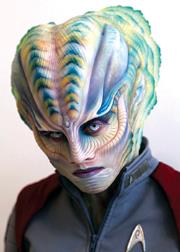
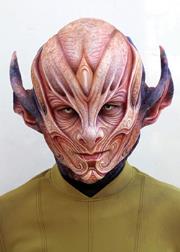
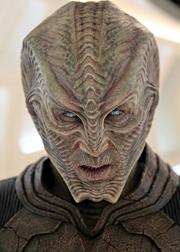
The Burbank crew had a build schedule of 2.5 months to sculpt and mold the majority of the characters. Then, we would send the molds to a new shop in Vancouver where a crew would be hired to run the molds in silicone and paint and prep everything for application. It took three huge semi-trucks to move our shop to Canada. We had a bigger shop with at least 40 people working full time on running appliances, pre-painting, assembly, dental work, etc. We still had several characters that needed development so Joel, Richie Alonzo and sculptor Joey Orosco tackled those in Vancouver. The other crew that came with us included Gil Liberto, Brian Blair and John Halfmann in the mold shop. Lenny MacDonald started painting and detail work on the Quills' characters.
The local artists in Vancouver were simply FANTASTIC! They were all so well-rounded in skills that we could give them anything and they would do it all well, particularly painting. They would take those silicone pieces and give them really amazing paint jobs, which really elevated the make-up designs. I felt that with this Canadian crew and the American crew in Burbank, that this was possibly the best crew that I had ever worked with, anywhere. Several of the Vancouver shop crew were also used for make-up applications as well. The painting staff was comprised of these artists: Bronwyne Sloley, Werner Pretorius, Mike Fields, Felix Fox, Lance Webb, Caitlin Groves, Kyle Huculak, Erin Peters, Holland Miller, Daemon Cadman, Frida Norrman and Corrine DeBarry.
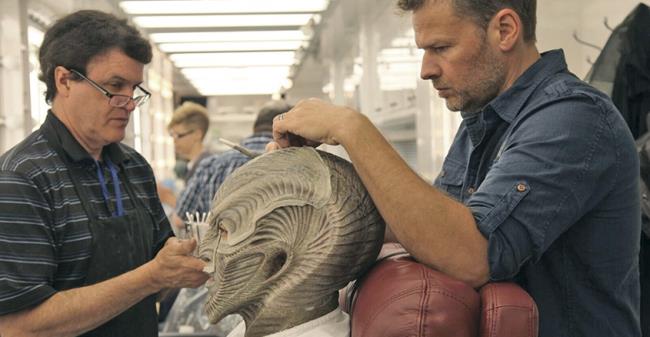 Lennie MacDonald (left) and Joel Harlow
Lennie MacDonald (left) and Joel Harlow
The next big task was to run all of the silicone appliances. The challenge with this was that the appliances would be big, thick and heavy. They had to be soft but not too soft or they would distort. Fortunately, we had similar experiences with these problems on a previous show, The Green Lantern, where we developed foam inserts and reinforcement techniques to make large appliances work. We only had one test day per character and I would estimate how soft we should run the silicone, but often Joel would determine during the test that we needed to go even softer since he tested every alien character himself to establish the look. Since we were using generic appliances that were not cast on the actual actor, Joel needed a softer appliance in order to stretch the pieces to fit. I am also happy to say that we had no adhesion problems or delamination issues in spite of the weight. We used approximately 650 gallons of PlatSil Gel 10 and the silicone crew was staffed by Vancouver artists Raj Mariathasan, Matt Aebig, Jeff Leblanc and Caitlin Groves, and headed by Tegan Colby. Shelagh McIvor cast Spock's ears. They all did an incredible job in the time frame that they had.
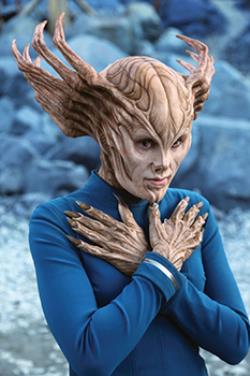 Several of the characters had to be pre-assembled and various detail pieces fabricated. Carolyn Williams was mostly a one-person department in this regard. She fabricated and installed hundreds of Quills, detailed horns and claws for Reptilicus, refurbished various appliances so that we could reuse some of them on stunt players, preassembled the Tyvana pieces, detailed the Satine characters. The list could go on.
Several of the characters had to be pre-assembled and various detail pieces fabricated. Carolyn Williams was mostly a one-person department in this regard. She fabricated and installed hundreds of Quills, detailed horns and claws for Reptilicus, refurbished various appliances so that we could reuse some of them on stunt players, preassembled the Tyvana pieces, detailed the Satine characters. The list could go on.
Tracy Lai and Toby Lindala handled all of the dental pieces that we needed while Shelagh McIvor, Crissy Renaud and Amelia Smart handled most of the seaming and hair punching.
Although the majority of the make-ups were prosthetic appliances, we also constructed several silicone background masks. These were constructed with a silicone skin and fiberglass underskull. These were detailed and finished in Canada by Kyle Huculak, Kalynn Kallweit and Brittney Bolzan. The molds and castings had been made in Los Angeles at our MEL satellite shop. Several of the masks were converted to fully animatronic characters by mechanical artist Tim Ralston and were all shot in Dubai. Rob Hinderstein made some incredible eyes for these characters. He is truly the master of lifelike eyes.
Other creature effects items included a full-body shriveled corpse, replacement heads, CG scanning models and a large creature puppet which required two puppeteers inside of its body to operate it. This creature was called the "Elephant Slug" and was built partly on producer JJ Abrams' request for a practical creature that was also non-humanoid. Brian Blair and Don Lanning headed up this project and was filmed in Dubai.
The lead antagonist Krall (played by Idris Elba) was mostly developed in Vancouver and required four stages of make-up for this character. This required a lot of designing and redesigning to lock down the look. Just two weeks before shooting, Joel and director Justin Lin decided to completely redesign him. Joey Orosco completed the final sculpt in two days. Mike Fields and Werner Pretorius performed most of the make-up applications on Idris.
Another character that went through design changes was the Kalara character. Her make-up was also initially difficult to apply because the design required an extremely smooth and thin skin texture. With some refinement in the sculpting and molding process, we came up with a good balance in a new appliance. Joel and Toby Lindala did a wonderful job with her application.
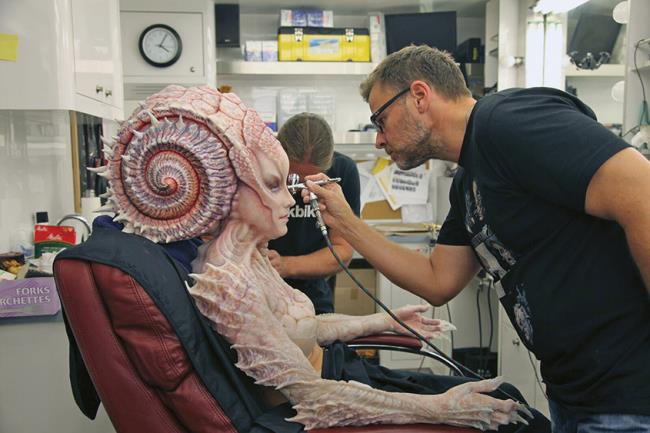 Joel Harlow creates the make-up and prosthetics for alien Natalia
Joel Harlow creates the make-up and prosthetics for alien Natalia
One of the most elaborate make-ups was of the very aquatic-looking alien named Natalia. This involved a torso, arms and an extremely large headpiece shaped like a seashell.
The headpiece was a hard shell cast in a lightweight urethane plastic. This was then blended over by the forehead silicone appliance. Joey Orosco sculpted the head, face and torso. The arms were sculpted by John Wrightson and everything was brilliantly painted by Bronwyn Sloley. This application took 6.5 hours by Joel and Werner Pretorius with some assistance by Lenny MacDonald and me.
The Jaylah make-up (played by Sofia Boutella) was probably the most tested. Ritchie Alonzo sculpted the forehead appliance. This was a Neville Page design and Joel and Ritchie decided to incorporate the black-line element in the sculpting. This would ensure consistency of the black line on each appliance. Ritchie and Shelagh McIvor applied this delicate make-up. Wig maker Khanh Trance built a special wig that gave the illusion of having anatomy continue past the hairline which was applied by Robert Pandini. Cristina Patterson created some amazing contact lenses for Jaylah.
Vancouver make-up artist Monica Huppert was brought in with her crew to make up all of the humans and straight make-ups. The Hair Department was headed by Anne Carroll. Spock (Zack Quinto) had his eyebrows shaved and the time-honored technique of each individual hair hand-laid. Several new sets of ears were sculpted by Richie Alonzo and Zack and Joel picked the ones that they liked based on the tests. Joel and Felix Fox applied Zack's make-up.
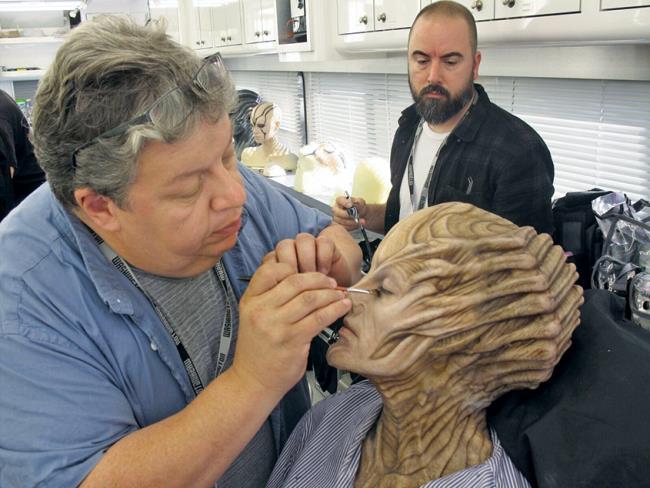 Joel Harlow creates the make-up and prosthetics for alien Natalia
Joel Harlow creates the make-up and prosthetics for alien Natalia
Many of the painting crew also worked dong application as well. After Joel established the characters, he assigned them to each team of make-up artists. The make-up artists from the shop were Felix Fox, Ritchie Alonzo, Werner Pretorius, Holland Miller, Toby Lindala, Lenny MacDonald, Caitlin Groves, Steve Buscaino, Shelagh McIvor and Amelia Smart. Kevin Haney came up from Los Angeles and helped out on the Wadjet character. Telesis was the adhesive of choice and we went through gallons of it. Skin illustrator Tim Gore's Bloodworks and Endura were often used to airbrush paint.
At the peak of the production, we had racks and racks of appliances, rooms filled with hundreds of retired molds, and walls stacked with dozens of background masks. I remember walking into one room where we kept all of the Sil alien appliances which was a very Gige-rish design. It reminded me of years ago when I worked on Alien Resurrection, with face huggers stacked everywhere. I also remember walking in the shop and seeing Carolyn Williams working, surrounded by 15 or more Satine heads. It looked like she was in the middle of a garden of giant Venus' flytraps! I remember row after row of Manus appliances. Manus was a complex make-up to build and instead of shooting three days as planned, he shot 30-something days instead.
There isn't enough space in one article to describe everything that was made for this film, but I hoped that I covered some of the major ones.

Star Trek alien Natalia
Not too many years ago, make-up budgets and time schedules were much larger and longer. Those were the good old days and are now long gone! So when producer Jeffrey Chernov asked Joel Harlow to head up the Make-up Department for the film, everyone viewed it as a huge challenge.
Designs were the first order of business. Joel hired designers Carlos Huante, Allen Williams and Don Lanning. Around a hundred different designs were made and set out before director Justin Lin. He would then pick out the ones that would get developed further. Designer Neville Page made some contributions as well, and both teams of designers strove to keep the designs in a Star Trek style.
The design team not only had to create new alien races, but it also had to "update" some of the already established characters. Don Lanning resculpted Keenser and Spock received new ear sculptures as well. All throughout production, new concepts were being developed. The attitude from production was always, "Let's make them all happen!"
Suitable shop space was found in Burbank and the shop was set up and began working in February. Gil Laberto was hired to run the mold shop and mold makers Brian Blair, Todd Bates, John Halfmann, Chris Baer, Pedro Valdez and Johnny Saiko were brought in. Gil and I started life-casting people on a daily basis, while the mold makers started generating sculpting positives. Joel then assembled a dream team of sculptors. In addition to himself, he enlisted the talents of Norman Cabrera, Don Lanning, Joey Orosco, Matt Rose, Miles Teves, Don Lanning, Ritchie Alonzo, John Wrightson, Lee Joyner and Mike Rotella. Everyone was extremely excited, and many of the sculptors felt that this was going to be some of the best work done in years. An annex shop was eventually set up at Make Up Effects Labs to accept the main shop's overflow. Pedro Valdez coordinated this shop with the construction of our background masks and fiberglass molds. Scotty Fields, A.J. Menudo, Alex Noble, Josh Sacks and Josh McCarron all added their lab tech skills in both shops.



The Burbank crew had a build schedule of 2.5 months to sculpt and mold the majority of the characters. Then, we would send the molds to a new shop in Vancouver where a crew would be hired to run the molds in silicone and paint and prep everything for application. It took three huge semi-trucks to move our shop to Canada. We had a bigger shop with at least 40 people working full time on running appliances, pre-painting, assembly, dental work, etc. We still had several characters that needed development so Joel, Richie Alonzo and sculptor Joey Orosco tackled those in Vancouver. The other crew that came with us included Gil Liberto, Brian Blair and John Halfmann in the mold shop. Lenny MacDonald started painting and detail work on the Quills' characters.
The local artists in Vancouver were simply FANTASTIC! They were all so well-rounded in skills that we could give them anything and they would do it all well, particularly painting. They would take those silicone pieces and give them really amazing paint jobs, which really elevated the make-up designs. I felt that with this Canadian crew and the American crew in Burbank, that this was possibly the best crew that I had ever worked with, anywhere. Several of the Vancouver shop crew were also used for make-up applications as well. The painting staff was comprised of these artists: Bronwyne Sloley, Werner Pretorius, Mike Fields, Felix Fox, Lance Webb, Caitlin Groves, Kyle Huculak, Erin Peters, Holland Miller, Daemon Cadman, Frida Norrman and Corrine DeBarry.
 Lennie MacDonald (left) and Joel Harlow
Lennie MacDonald (left) and Joel HarlowThe next big task was to run all of the silicone appliances. The challenge with this was that the appliances would be big, thick and heavy. They had to be soft but not too soft or they would distort. Fortunately, we had similar experiences with these problems on a previous show, The Green Lantern, where we developed foam inserts and reinforcement techniques to make large appliances work. We only had one test day per character and I would estimate how soft we should run the silicone, but often Joel would determine during the test that we needed to go even softer since he tested every alien character himself to establish the look. Since we were using generic appliances that were not cast on the actual actor, Joel needed a softer appliance in order to stretch the pieces to fit. I am also happy to say that we had no adhesion problems or delamination issues in spite of the weight. We used approximately 650 gallons of PlatSil Gel 10 and the silicone crew was staffed by Vancouver artists Raj Mariathasan, Matt Aebig, Jeff Leblanc and Caitlin Groves, and headed by Tegan Colby. Shelagh McIvor cast Spock's ears. They all did an incredible job in the time frame that they had.
 Several of the characters had to be pre-assembled and various detail pieces fabricated. Carolyn Williams was mostly a one-person department in this regard. She fabricated and installed hundreds of Quills, detailed horns and claws for Reptilicus, refurbished various appliances so that we could reuse some of them on stunt players, preassembled the Tyvana pieces, detailed the Satine characters. The list could go on.
Several of the characters had to be pre-assembled and various detail pieces fabricated. Carolyn Williams was mostly a one-person department in this regard. She fabricated and installed hundreds of Quills, detailed horns and claws for Reptilicus, refurbished various appliances so that we could reuse some of them on stunt players, preassembled the Tyvana pieces, detailed the Satine characters. The list could go on.Tracy Lai and Toby Lindala handled all of the dental pieces that we needed while Shelagh McIvor, Crissy Renaud and Amelia Smart handled most of the seaming and hair punching.
Although the majority of the make-ups were prosthetic appliances, we also constructed several silicone background masks. These were constructed with a silicone skin and fiberglass underskull. These were detailed and finished in Canada by Kyle Huculak, Kalynn Kallweit and Brittney Bolzan. The molds and castings had been made in Los Angeles at our MEL satellite shop. Several of the masks were converted to fully animatronic characters by mechanical artist Tim Ralston and were all shot in Dubai. Rob Hinderstein made some incredible eyes for these characters. He is truly the master of lifelike eyes.
Other creature effects items included a full-body shriveled corpse, replacement heads, CG scanning models and a large creature puppet which required two puppeteers inside of its body to operate it. This creature was called the "Elephant Slug" and was built partly on producer JJ Abrams' request for a practical creature that was also non-humanoid. Brian Blair and Don Lanning headed up this project and was filmed in Dubai.
The lead antagonist Krall (played by Idris Elba) was mostly developed in Vancouver and required four stages of make-up for this character. This required a lot of designing and redesigning to lock down the look. Just two weeks before shooting, Joel and director Justin Lin decided to completely redesign him. Joey Orosco completed the final sculpt in two days. Mike Fields and Werner Pretorius performed most of the make-up applications on Idris.
Another character that went through design changes was the Kalara character. Her make-up was also initially difficult to apply because the design required an extremely smooth and thin skin texture. With some refinement in the sculpting and molding process, we came up with a good balance in a new appliance. Joel and Toby Lindala did a wonderful job with her application.
 Joel Harlow creates the make-up and prosthetics for alien Natalia
Joel Harlow creates the make-up and prosthetics for alien NataliaOne of the most elaborate make-ups was of the very aquatic-looking alien named Natalia. This involved a torso, arms and an extremely large headpiece shaped like a seashell.
The headpiece was a hard shell cast in a lightweight urethane plastic. This was then blended over by the forehead silicone appliance. Joey Orosco sculpted the head, face and torso. The arms were sculpted by John Wrightson and everything was brilliantly painted by Bronwyn Sloley. This application took 6.5 hours by Joel and Werner Pretorius with some assistance by Lenny MacDonald and me.
The Jaylah make-up (played by Sofia Boutella) was probably the most tested. Ritchie Alonzo sculpted the forehead appliance. This was a Neville Page design and Joel and Ritchie decided to incorporate the black-line element in the sculpting. This would ensure consistency of the black line on each appliance. Ritchie and Shelagh McIvor applied this delicate make-up. Wig maker Khanh Trance built a special wig that gave the illusion of having anatomy continue past the hairline which was applied by Robert Pandini. Cristina Patterson created some amazing contact lenses for Jaylah.
Vancouver make-up artist Monica Huppert was brought in with her crew to make up all of the humans and straight make-ups. The Hair Department was headed by Anne Carroll. Spock (Zack Quinto) had his eyebrows shaved and the time-honored technique of each individual hair hand-laid. Several new sets of ears were sculpted by Richie Alonzo and Zack and Joel picked the ones that they liked based on the tests. Joel and Felix Fox applied Zack's make-up.
 Joel Harlow creates the make-up and prosthetics for alien Natalia
Joel Harlow creates the make-up and prosthetics for alien NataliaMany of the painting crew also worked dong application as well. After Joel established the characters, he assigned them to each team of make-up artists. The make-up artists from the shop were Felix Fox, Ritchie Alonzo, Werner Pretorius, Holland Miller, Toby Lindala, Lenny MacDonald, Caitlin Groves, Steve Buscaino, Shelagh McIvor and Amelia Smart. Kevin Haney came up from Los Angeles and helped out on the Wadjet character. Telesis was the adhesive of choice and we went through gallons of it. Skin illustrator Tim Gore's Bloodworks and Endura were often used to airbrush paint.
At the peak of the production, we had racks and racks of appliances, rooms filled with hundreds of retired molds, and walls stacked with dozens of background masks. I remember walking into one room where we kept all of the Sil alien appliances which was a very Gige-rish design. It reminded me of years ago when I worked on Alien Resurrection, with face huggers stacked everywhere. I also remember walking in the shop and seeing Carolyn Williams working, surrounded by 15 or more Satine heads. It looked like she was in the middle of a garden of giant Venus' flytraps! I remember row after row of Manus appliances. Manus was a complex make-up to build and instead of shooting three days as planned, he shot 30-something days instead.
There isn't enough space in one article to describe everything that was made for this film, but I hoped that I covered some of the major ones.
No Comments
Post Comment

